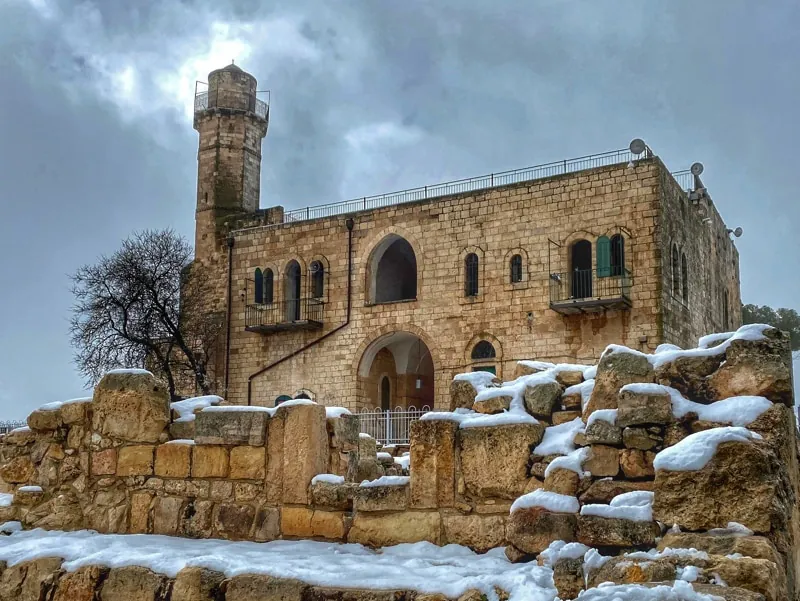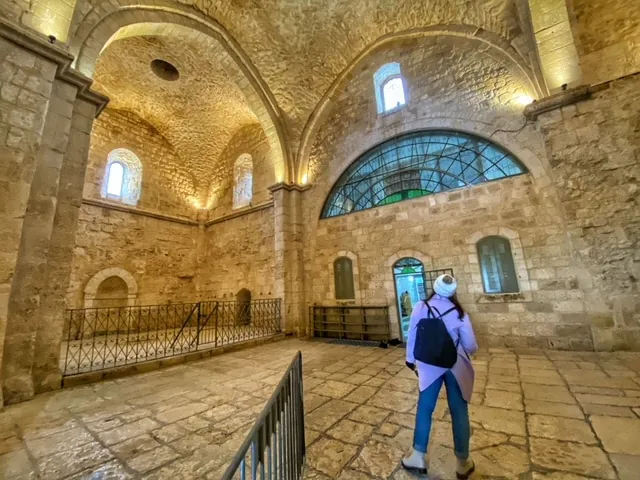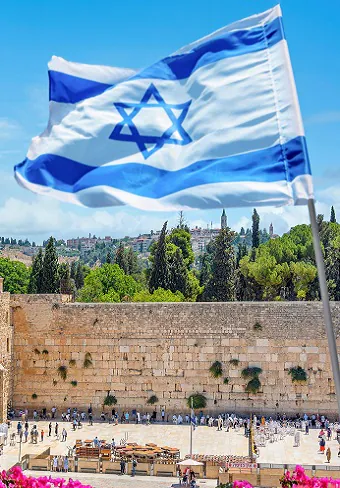Tomb of Prophet Samuel

The tomb of Prophet Samuel, also known as Nabi Samwil, is a historical site on a mountain top 6 miles from Jerusalem’s old city. A tradition that developed in the Byzantine period places the burial of prophet Samuel here. Being sacred to Jews, Christians, and Muslims, the structure over the holy tomb is both a mosque, a synagogue, and a former church.
History of the Tomb of Samuel
 Samuel was a leading figure in the Bible in the significant transitional period of re-uniting the tribes and establishing a monarchy. He anointed both King Saul and King David. Samuel’s hometown was in a site called “Ramah”, which is also where he was buried (1 Sam. 25:1, 28:3). “Ramah” which means in Hebrew “A high place” suits well the location of Nabi Samwil, about 3000 feet above sea level. The first to mention Sameul’s tomb here was a Byzantine period pilgrim by the name Theodosius. It seems that the Christians also established a monastery at the site. After the Muslim conquest of the Holy Land, the site continued to be revered by Muslims, who also set up a pottery workshop there.
Samuel was a leading figure in the Bible in the significant transitional period of re-uniting the tribes and establishing a monarchy. He anointed both King Saul and King David. Samuel’s hometown was in a site called “Ramah”, which is also where he was buried (1 Sam. 25:1, 28:3). “Ramah” which means in Hebrew “A high place” suits well the location of Nabi Samwil, about 3000 feet above sea level. The first to mention Sameul’s tomb here was a Byzantine period pilgrim by the name Theodosius. It seems that the Christians also established a monastery at the site. After the Muslim conquest of the Holy Land, the site continued to be revered by Muslims, who also set up a pottery workshop there.
On June 7th, 1099, the Crusader’s forces camped at the site and, from its top, saw, for the first time, their final destination – Jerusalem. Rejoicing at the view of Jerusalem, the Crusaders named the site “Montjoie” – “The mountain of rejoice.” Later, they transformed the mountaintop into a fortified church complex. Crusader-era pilgrims record how pilgrims would walk by foot from here to Jerusalem, some even barefoot.
Where Richard Lionheart Became Broken-Heart
In 1187 Saladin conquered the site and turned the church into a mosque. Later, he allowed Richard the lionheart to watch Jerusalem from here, which he did in tears, for Jerusalem was again lost to the Muslims. The site would remain in Muslim hands until the Six-Day War in 1967. Since then, the site has been under Israeli sovereignty and is open to people of all faiths.
Touring Samuel’s Tomb / Nabi Samwil
The site is a national park. Its hilltop was excavated in the 1990s, mainly uncovering Crusaders’ era fortifications. The church, which became a mosque, is still intact, and the view from its rooftop is breathtaking. Jerusalem, Tel-Aviv, and the Mediterranean Sea are visible on a good day. The Muslims revere a cenotaph in the mosque as Samuel’s tomb. Jews revere another cenotaph on a lower floor as Samuel’s burial site. It is open every day of the week, free of charge.
A tour of Nabi Samuil can be combined with a guided day tour of Jerusalem.










